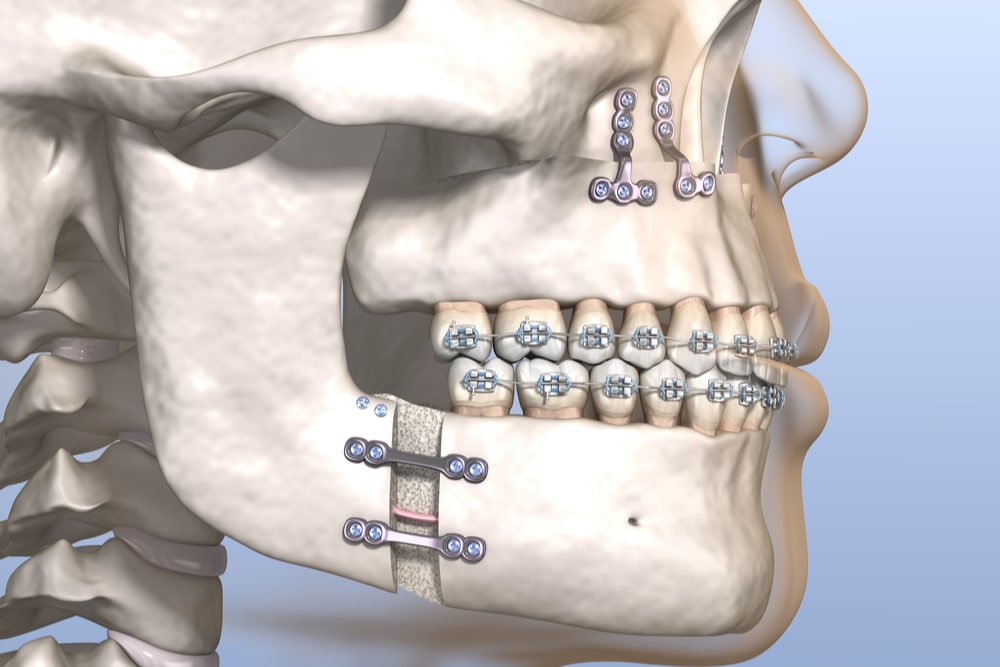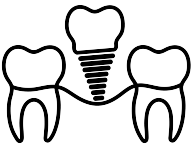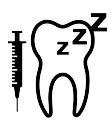Jaw reconstruction, more formally known as orthognathic surgery, is a surgical procedure that corrects a variety of jaw problems by cutting, moving, modifying, and realigning the jawbones. Depending on the specific problem, jaw reconstruction can be performed on either the upper jaw, lower jaw, or both jaws. When performed on both jawbones, jaw reconstruction is sometimes known as double jaw surgery. Although there are different techniques used for jaw surgery, some common techniques include:
Maxilla Osteotomy
For structural problems that affect the upper jaw and/or cause an open bite, a maxillary osteotomy may be performed. Since this approach cuts the bone below the eyes along the Le Forte fracture, it is also referred to as Le Forte osteotomy. Depending on the extent of the reconstruction, there are three types of Le Forte osteotomies that may be used. Performing a Le Forte Osteotomy allows the entire upper jaw to move as one piece, which minimizes the amount of trauma exerted on the surrounding structures. After the upper jaw has been moved to its new position, it will be secured with titanium screws that will eventually fuse with the bone.
Mandible Osteotomy
When the lower jaw is too far behind the upper jaw or an open bite is present, then a mandibular osteotomy may be performed. During a mandibular osteotomy, the bone is broken between the first and second molars so the entire mandible can be moved into its new position and secured with screws. This is sometimes known as a sagittal split osteotomy.
Did You Know?
Jaw reconstruction surgery is formally referred to as “orthognathic surgery”. In latin, “ortho” means to straighten, and “gnathia” means jaws. Therefore, orthognathic translates to straightening the jaws.
Frequently Asked Questions:
Do I need jaw reconstruction?
Only an oral surgeon can accurately determine if you can benefit from jaw reconstruction. With that being said, you may need jaw reconstruction if you have a cleft palate, problems with your temporomandibular joint, sleep apnea, severe malocclusion, or orthodontic problems that cannot be effectively treated with braces alone. To determine if you are a candidate for jaw reconstruction, schedule a consultation with Dr. Mehdi Matin of West Coast Oral Surgery today!
What can I expect when having jaw reconstruction at West Coast Oral Surgery?
When having jaw reconstruction performed at West Coast Oral Surgery, you can first expect to have braces put on your teeth. This is a necessary step to properly align your teeth in preparation for surgery. In most cases, you can expect to wear braces for about 12-18 months before surgery. Your oral surgeon will coordinate with your orthodontist during this time to ensure that your teeth are properly prepared.
Jaw reconstruction surgery is performed in a hospital under general anesthesia. Depending on the extent of your particular surgery, it can either be performed as an outpatient procedure or it may require an overnight hospital stay. During your surgery, Dr. Mehdi Matin will use one of the aforementioned techniques to cut and reposition the jawbones. Then, medical hardware such as wires, screws, bone plates, and/or rubber bands may be used to secure the jaw. In most cases, you can expect to have screws placed inside the bone and wires and/or rubber bands used externally to temporarily provide stabilization.
In some cases, you may also require a bone graft. When a bone graft is needed, bone is often harvested from another area of the body such as the hip, leg, or rib bones. Once the bone has been harvested, it will be deposited as needed and secured using screws and bone plates.
What can I expect when recovering from jaw reconstruction surgery?
When recovering from jaw reconstruction surgery, you can expect to wake up in a hospital recovery room. You will remain in recovery for about an hour or two, then you will either be discharged or taken up to room. As you come out of anesthesia, you will likely have a large ice pack wrapped around your face to reduce swelling. Since your face will still be numb after surgery, you should not feel any pain. Within the first few days, you will experience swelling and bruising that normally peaks on the third day
Depending on the extent of your surgery, you may have your jaw wired or banded shut. You may also have a dental splint placed between your top and bottom teeth to help hold everything in place. Since you will be unable to open your mouth while your jaw heals, you will be on a temporary liquid diet. For some creative liquid recipes, see “Dinner Through a Straw”.
While the initial recovery from jaw reconstruction surgery takes about 2-6 weeks, it will take about 2-4 months for the underlying bone to heal. In some cases, it can take as long as a year to make a full recovery from jaw reconstruction surgery. With that being said, the majority of people who have undergone this surgery were happy with their results. For many, jaw reconstruction surgery allows them to eat foods they were not able to eat, improves their facial profile, and relieves pain from a misaligned jaw.




